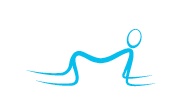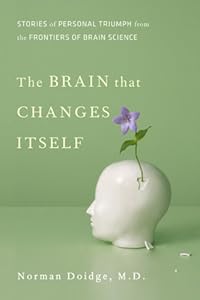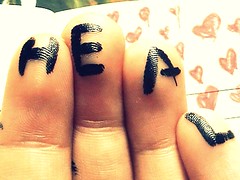Crawling through hotels rooms in America: Self-Healing
I spent the last 7 days crawling around hotel rooms in Arizona.
What?!?
Sounds a little crazy, right?
Possibly, but give me a chance to explain: I was on holidays and wanted to do a little body experiment. I was testing out a self-healing practice I’ve heard lots about but hadn’t yet experienced with any conviction. I am a skeptic at heart, so don’t take things to heart just because. But I felt I’d give this practice a fair shot.
What practice is that? It’s a Nia practice called the Nia 5 Stages of Self-Healing.
Nia 5 Stages is an integrative movement practice based on the five stages of human development: Embryonic, Creeping, Crawling, Standing and Walking.
Practiced with awareness, these stages have the power to facilitate self healing through optimal alignment, improved function and comfort in the body. Whether practiced at length or for as little as five minutes a day, this system provides a tool for reclaiming and sustaining mobility, flexibility, strength, agility and stability.
So for 5 minutes every morning (1 minute per stage) I got down to the floor and experienced this practice:
Minute 1 – Embryonic
The first stage of development, Embryonic, is a
circular architecture of movement. Embryonic is
fishlike, with fluid, gently dynamic movements. Rolling
and “cooking” all four sides, you move as if you are
in water, suspended and supported to move freely. In
this stage, move from your center, your umbilical cord.
Minute 2 – Creeping

linear, horizontal movement architecture. Creeping is
lizard-like, integrating the action of opposite sides.
Your body is a long line with a curve in the lower spine,
a smooth slope from tail to head. Your shoulders face
forward and your hips face down, resting on the earth.
One leg is long and extended as the opposite knee
draws up, freeing your hip joint to help you move
forward. Use one hand to reach out and pull, while
the other hand pushes, staying close to your body.
Minute 3 – Crawling
The third stage of development, Crawling, is a four-point
of contact “tabletop” architecture of movement, a self sustaining
geometry. Crawling is bear-like, shifting
postures from four pillars of stability onto three pillars
of mobility. As one hand reaches, soft and paw-like,
sense the looseness of your hand and wrist joint,
fingers dripping down, free of tension. Your belly
hangs down with the pull of gravity, creating a curve
in your lumbar spine. Here, your spine naturally begins
to develop agility, mobility and strength.
Minute 4 – Standing

architecture. Begin squatting, monkey-like, in this stage of
waiting and resting, giving the full weight of your body to
your feet. Build strength and flexibility by resting into gravity.
Your adult structure is designed to best support this stage by
placing one whole foot flat on the ground for stability, while the other foot rests on the ball, heel up.
Minute 5 – Walking

flexible and stable moving architecture. Human-like, walking
is the dynamic action of catching yourself from falling, which
involves two actions: a stance and a step. Integrated, these
actions create the forward motion of traveling as an upright,
bi-pedal being. Enter this stage by first rising onto the balls
of your feet and walking with your heels up. When you are
ready, drop your heels and allow them to lead your walk,
rolling through your heel onto your whole foot.
So really, Nia 5 Stages is a practice of retracing the body’s developmental process to re-pattern, realign, energize and condition the body, mind, emotions and spirit.
My experience?
I started out the week with left hip/buttock tightness (which I rated 3/10 in intensity) and lower back/lumbar pain/stiffness (which I rated 2.5/10). I wondered if that would change by the end of the 7 days.
After journaling for 7 days about my experiences here are my top 5 main observations:
1. It’s difficult to pay attention to sensation. My mind wanders a lot and so I needed to be in dialogue with myself consistently, asking myself “how does this feel?”, “can I tweak some part of the movement to make it feel better?” or “PAY attention!”. At the same time I needed to make sure I wasn’t directing my movements with my mind, but that I was letting them be organic, directed by that innate desire to move in my bodies’ way, the way it needed to be moved for healing.
2. In creeping and crawling I released the stress and tension that lives in my shoulders 90% of the time (because of the time I spend at the computer). How? By moving my head and using my eyes to direct the movement. When I looked first, my head would follow and I’d get a nice ahhhh sensation as my neck would release.
3. I realized that, because I live an active lifestyle, I am frequently putting my body in compromising positions. During the week I actually added to my problem list because of the repetitive action of hiking and the time I spent zooming around the desert on an ATV. The work I was doing through my 5 Stages practice was to continually address the present experiences in my body, without thinking about what my body felt like yesterday. Today is always different.
4. The standing position improved my ease with getting up from the floor. As Debbie Rosas says, “Everybody’s got to get out of bed every day”, so it’s important to be able to get up from the floor with ease. At the beginning of the week, I felt it was such an extreme effort to move from that squatting position up to standing, but nearing the end of the week I felt strong and rose up with ease and power.
5. My “pain” and “stiffness”? I said sayonara to my hip and buttock pain! And I lessened my low back stiffness measurably. Now I’m gonna be honest with myself and say that those are typically problem areas in my body, the tension could come back. But, here’s what I reminded myself — what I was doing was Self-Healing. And in so many ways, that’s a strong and powerful practice. It puts the opportunity to heal myself in my hands.
So could there really be something to this practice? I’m beginning to think so….
An interesting anecdote comes from a book I read a few years back called The Brain That Changes Itself by Dr. Norman Doidge.
His book describes a 65-year old man who had suffered a stroke. His son was unable to arrange extended therapy treatment for his dad, and although he knew nothing about rehabilitation, was desperate to help him walk again. Knowing how infants developed their motor skills, he got his dad down on the floor. After months of supported crawling, he eventually began 4 point crawling, then standing, then walking. It was a lot of work, but what a brilliant outcome.
Isn’t that something? Could there be a neurological benefit to the 5 Stages practice? I’ll bet my neurons were happily firing away and reorganizing themselves in some way…no proof for that but it makes sense to me. Move the body, condition the brain.
Feel to heal
Using the 5 Stages of Healing, I spent last week healing myself. Through feeling. I was self healing through feeling.
- Image by bluewinx15(busy) via Flickr
Self healing, as described by Debbie Rosas and Carlos AyaRosas (co-founders of Nia), is something that arises out of awareness. In Nia, self-healing is described in a very expansive way, noticing the language we use to define our experience. The way in which we define our experiences impacts how we experience them profoundly. In other words, how you say it is how you experience it.
For example, as I type this post, I am aware that my ears are plugged, my nose is stuffy, there is a tickle in my throat and my head is full. I might describe myself as being sick, or alternatively, I can instead propose that I am healing. If I tell myself that I am healing, then I am making an active and positive statement that describes the truth. My body is always moving towards homeostasis; it is healing.
So in other words, self-healing is a continuous event. It is always happening, and Nia encourages me to be aware, using the sensory signals from my body to stimulate change.
So, if I pay attention to my left knee, which is a little achy, I can stimulate greater healing by moving throughout my daily routine in ways that make my left knee feel better (i.e., bending differently to put my shoes on, concentrating on my heel strike as I walk, placing more weight on my right leg as I brush my teeth). Little things that are, moment by moment, repairing my body.
It’s easy, I just feel to heal.
And I’ll keep doing that, through my 5 stages practice and my everyday living! Maybe you’ll be inspired to do the same?







[…] more about self healing through Nia here Share […]
[…] You can read about other self-healing techniques and Nia here. […]
[…] When’s the last time you got down on the floor and moved? There are a ton of benefits related to doing that (building strength, maintaining flexibility, keeping the hips open and mobile). You only were able to learn how to walk because you got down on the floor. As an infant, you developed the right muscles, coordination and agility that allowed you to walk. Now, as an adult, you would not believe the healing benefits of getting down on the floor! Check out my post about my 5 day experiment with crawling on the floor. […]